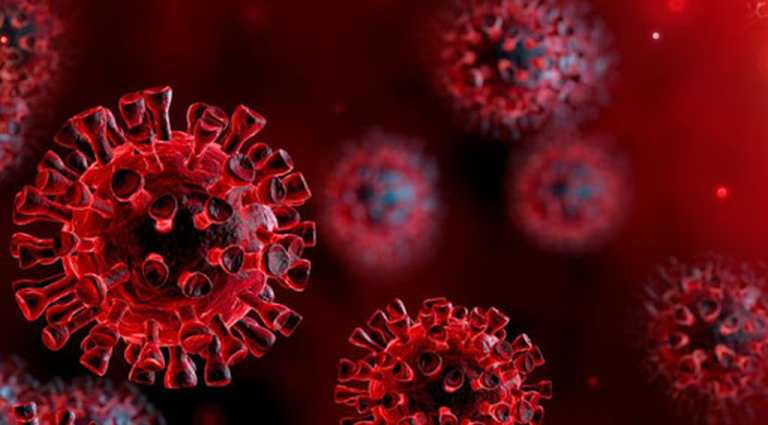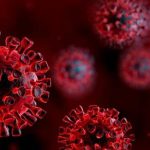COVID-19 Breakthrough: British scientists identify six different types of coronavirus with “clusters” of symptoms and increasing severity levels

British scientists have identified six distinct ‘types’ of coronavirus, each distinguished by a particular cluster of symptoms, in a breakthrough that promises to save lives by flagging the highest-risk patients. The study, which is published at medRxiv, was led by a team of scientists from King’s College London.
According to analysis of data from the COVID Symptom Study app, the research team found that the six COVID-19 types differed in the severity of the disease and the need for respiratory support during hospitalization. They found that patients with the sixth type of Covid-19 are nearly 10 times more likely to end up needing breathing support than patients in the first group.
Their findings have major implications for clinical management of coronavirus, and could help doctors predict who is most at risk and likely to need hospital care in a second wave of coronavirus infections. It is also significant because often patients only deteriorate to a critical stage several days after after showing symptoms. The new ranking system should flag up the highest-risk cases and give doctors the opportunity to intervene earlier.
The findings, derived from KCL’s symptom tracker app, used data from 1,600 users in the UK and US who have had confirmed Covid-19. The analysis revealed six specific groupings of symptoms emerging at characteristic timepoints in the progression of the illness, representing six distinct ‘types’ of COVID-19. The algorithm was then tested by running it on a second independent dataset of 1,000 users in the UK, US and Sweden, who had logged their symptoms during May.
“These findings have important implications for care and monitoring of people who are most vulnerable to severe COVID-19,” said Dr Claire Steves from King’s College London. “If you can predict who these people are at day five, you have time to give them support and early interventions such as monitoring blood oxygen and sugar levels, and ensuring they are properly hydrated – simple care that could be given at home, preventing hospitalisations and saving lives.”
All people reporting symptoms experienced headache and loss of smell, with varying combinations of additional symptoms at various times. Some of these, such as confusion, abdominal pain and shortness of breath, are not widely known as COVID-19 symptoms, yet are hallmarks of the most severe forms of the disease.
The six clusters are as follows:
- (‘flu-like’ with no fever): Headache, loss of smell, muscle pains, cough, sore throat, chest pain, no fever.
- (‘flu-like’ with fever): Headache, loss of smell, cough, sore throat, hoarseness, fever, loss of appetite.
- (gastrointestinal): Headache, loss of smell, loss of appetite, diarrhea, sore throat, chest pain, no cough.
- (severe level one, fatigue): Headache, loss of smell, cough, fever, hoarseness, chest pain, fatigue.
- (severe level two, confusion): Headache, loss of smell, loss of appetite, cough, fever, hoarseness, sore throat, chest pain, fatigue, confusion, muscle pain.
- (severe level three, abdominal and respiratory): Headache, loss of smell, loss of appetite, cough, fever, hoarseness, sore throat, chest pain, fatigue, confusion, muscle pain, shortness of breath, diarrhea, abdominal pain.
Next, the research team investigated whether people experiencing particular symptom clusters were more likely to require breathing support in the form of ventilation or additional oxygen.
They discovered that only 1.5% of people with cluster 1, 4.4% of people with cluster 2 and 3.3% of people with cluster 3 COVID-19 required breathing support. These figures were 8.6%, 9.9% and 19.8% for clusters 4,5 and 6 respectively. Furthermore, nearly half of the patients in cluster 6 ended up in hospital, compared with just 16% of those in cluster 1.
Broadly, people with cluster 4,5 or 6 COVID-19 symptoms tended to be older and frailer, and were more likely to be overweight and have pre-existing conditions such as diabetes or lung disease than those with type 1,2 or 3.
The researchers then developed a model combining information about age, sex, BMI and pre-existing conditions together with symptoms gathered over just five days from the onset of the illness.
Lead researcher Dr Carole Sudre from King’s College London said:
”Our study illustrates the importance of monitoring symptoms over time to make our predictions about individual risk and outcomes more sophisticated and accurate. This approach is helping us to understand the unfolding story of this disease in each patient so they can get the best care.”
“Being able to gather big datasets through the app and apply machine learning to them is having a profound impact on our understanding of the extent and impact of COVID-19, and human health more widely,” said Sebastien Ourselin, professor of healthcare engineering at King’s College London and senior author of the study.
Professor Tim Spector added: ”Data is our most powerful tool in the fight against COVID-19. We urge everyone to get in the habit of using the app daily to log their health over the coming months, helping us to stay ahead of any local hotspots or a second wave of infections.”




